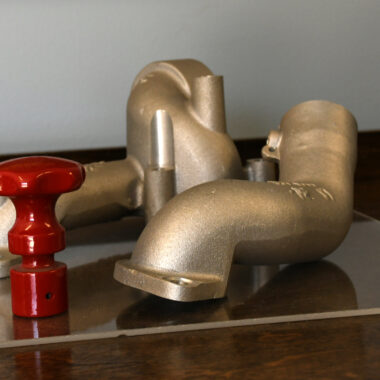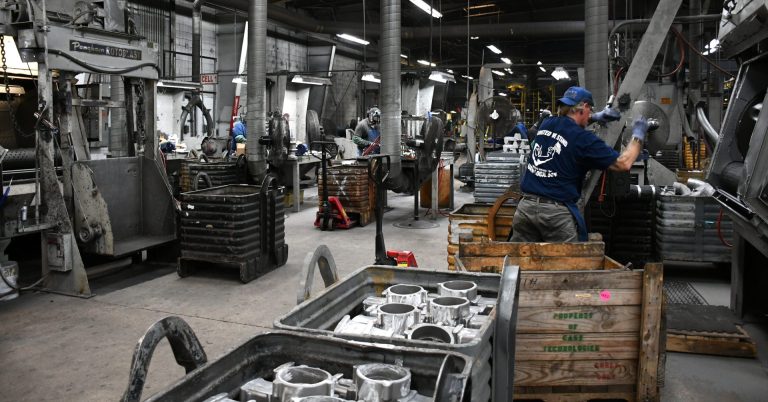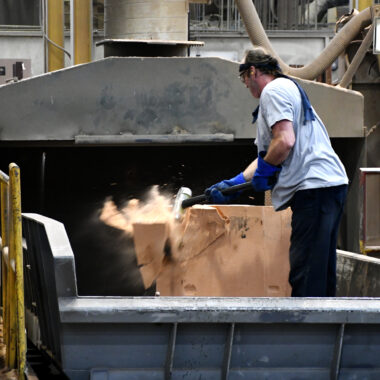Opening Success: Casting Aluminum Made Easy
Opening Success: Casting Aluminum Made Easy
Blog Article
The Conclusive Handbook on Light Weight Aluminum Casting Provider
As sectors proceed to require accuracy and high quality, comprehending the nuances of aluminum casting processes ends up being extremely important. As we navigate through this clear-cut manual, revealing sector trends and innovations that shape the landscape of light weight aluminum spreading services, we are reminded of the countless possibilities that await those prepared to submerse themselves in this detailed craft.

Recognizing Aluminum Casting Procedures
Checking out the intricacies of light weight aluminum spreading procedures discloses the accuracy and complexity included in changing molten steel into detailed components. Light weight aluminum spreading is a thorough production technique that involves the putting of liquified light weight aluminum right into a mold to develop a wanted shape.
During the cooling procedure, the light weight aluminum takes the shape and solidifies of the mold and mildew. What follows is meticulous workmanship to remove any imperfections and improve the component to fulfill the called for requirements. This procedure requires a keen eye for information and a deep understanding of metallurgy to ensure the end product's quality and integrity.
Understanding the subtleties of light weight aluminum spreading procedures is vital for creating premium parts that satisfy sector requirements and requirements. From aerospace to auto sectors, the accuracy of light weight aluminum casting plays an essential function in manufacturing long lasting and trusted parts.
Important Devices and Tools
What tools and equipment are important for accomplishing accuracy and performance in aluminum spreading procedures? To ensure effective aluminum spreading, a number of necessary devices and tools are needed. Crucible heating systems play an important role in thawing the aluminum alloys, supplying the liquified metal required for casting. Crucibles constructed from materials like clay graphite or silicon carbide are frequently made use of as a result of their high warmth resistance. Furthermore, a ladle is important for transferring the molten steel from the heating system to the molds properly. Air flow systems are important to get rid of any kind of fumes or gases produced throughout the spreading procedure, ensuring a secure functioning environment. Molds, made from products such as sand or steel, are needed to shape the liquified metal into the wanted kind. Other tools like tongs, pouring containers, and cooling chambers are likewise crucial for dealing with the liquified steel and ensuring proper solidification. By using these devices and tools successfully, aluminum spreading solutions can achieve high precision and performance in their processes.
Quality Control in Light Weight Aluminum Spreading
Making certain consistent top quality criteria is paramount in aluminum spreading procedures to fulfill market needs and client expectations. Quality control in aluminum spreading involves a systematic technique to monitoring and assessing every stage of the casting procedure to assure the last product's integrity. By implementing rigorous quality control procedures, aluminum casting solution suppliers can deliver elements that stick to the greatest requirements of top quality, performance, and integrity, eventually pleasing both market guidelines and consumer needs.

Optimizing Effectiveness and Productivity
To you can find out more improve functional efficiency in light weight aluminum spreading solutions, optimizing effectiveness and efficiency is vital for conference manufacturing demands and maintaining competitive advantage in the sector. Applying lean production principles, such as decreasing waste and simplifying processes, can dramatically enhance general performance. Making use of sophisticated modern technology, like computer-aided design (CAD) software application and automated systems, can improve productivity by reducing hands-on labor and increasing precision.

Working together closely with providers to make sure a consistent flow of high-quality products and implementing robust scheduling and inventory monitoring systems are additionally essential approaches for optimizing efficiency in aluminum casting solutions. By focusing on these areas, companies can attain greater degrees of productivity, satisfy check this site out consumer demands properly, and stay in advance in an open market.
Sector Patterns and Advancements
In feedback to the developing landscape of aluminum spreading solutions, staying abreast of market patterns and technologies is crucial for maintaining an one-upmanship and fulfilling the dynamic demands of the marketplace. One remarkable trend in the light weight aluminum casting market is the raising emphasis on sustainability and environmental duty. Business are adopting greener methods, such as using recycled light weight aluminum and executing energy-efficient processes, to line up with customer expectations and regulatory needs.
Additionally, innovations in technology are revolutionizing light weight aluminum casting processes. The combination of automation, robotics, and expert system is simplifying production, improving precision, and reducing preparations. 3D printing is likewise making waves in the industry by enabling complex geometries to be created with better efficiency and cost-effectiveness.
Additionally, there is a growing emphasis on personalization and product customization. With consumers looking for special and tailored products, light weight aluminum spreading solutions are adjusting to offer more versatile manufacturing solutions. By accepting these market fads and innovations, firms can place themselves for success in a rapidly developing market.
Conclusion
To conclude, the manual on light weight aluminum casting solutions provides a comprehensive introduction of the processes, tools, high quality control actions, performance techniques, and industry patterns in the field. By understanding these key aspects, organizations can enhance their casting processes, make sure high-grade products, and remain competitive in the marketplace. This clear-cut handbook works as a valuable resource for those involved in aluminum spreading solutions.
As sectors proceed to require accuracy and quality, comprehending the subtleties of light weight aluminum casting procedures comes to be critical (casting aluminum). Aluminum spreading is a meticulous manufacturing technique that involves the pouring of molten aluminum check into a mold to produce a preferred shape.Ensuring consistent top quality requirements is critical in light weight aluminum spreading procedures to meet industry requirements and client expectations. Quality control in light weight aluminum casting entails a methodical method to monitoring and evaluating every phase of the casting process to ensure the last product's honesty.In verdict, the manual on light weight aluminum casting solutions offers a comprehensive overview of the processes, tools, quality control measures, performance methods, and industry patterns in the area
Report this page